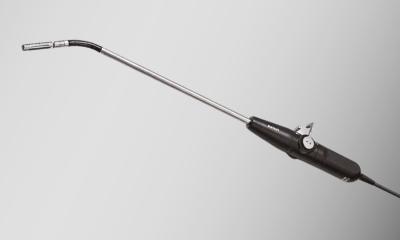Pioneering ultrasound use in airway management
Ultrasound is playing an increasing role in the management of the upper and lower airways, particularly in interventional procedures and emergency situations. It is also used to enhance patient safety.
Report: Mark Nicholls
Dr Michael S Kristensen, Head of Anaesthesia for ENT and maxillofacial surgery at Denmark’s Rigshospitalet, is pioneering the new and expanding role of ultrasonography in clinical decision-making, intervention and management of the upper and lower airways in a way that is clinically relevant, up-to-date and practically useful for clinicians. He has shown how ultrasonography is becoming essential in management of the upper and lower airways, can identify tracheal structures and is offering a primary diagnostic approach in suspicion of intraoperative pneumothorax. ‘A few years ago, ultrasound was not applied at all for airway management. Now, it is used for a whole range of activities,’ he explained.
These include screening and prediction of difficult airway management; diagnosing pathology that can affect airway management; identification of the cricothyroid membrane; measuring gastric content prior to airway management; airway related nerve blocks, and prediction of the appropriate diameter of endotracheal, endobronchial or tracheostomy tubes.
Other areas where ultrasound has shown airway management value is in differentiating between tracheal and oesophageal intubation; differentiating between tracheal and endobronchial intubation; confirmation of gastric tube placement; differentiating between different causes of dyspnoea/hypoxia and pulmonary oedema; and prediction of successful weaning from ventilator treatment.
‘In interventional procedures or emergency situations the major roles of ultrasound include the localisation of the trachea and the cricothyroid membrane before anaesthesia, so that the clinician will know exactly where to perform an emergency cricothyrotomy/tracheostomy in case it becomes necessary, and confirming or ruling out a suspicion of an intraoperative pneumothorax before placement of a pleural drain-tube.’
Ultrasound also confirms whether the endotracheal tube actually enters the trachea or accidentally enters the oesophagus, evaluates stomach contents and lung-pathology to distinguish between which treatment modalities that are needed and identifies the localisation of the appropriate tracheal level for dilatational tracheostomy or surgical tracheostomy.
Ultrasound is essential in upper and lower airways management because several indications cannot be performed in a clinically acceptable way, he explained. ‘For the primary suspicion of a pneumothorax, ultrasound is by far the fastest method, and it has a much higher sensitivity than an anterior-posterior X-ray in the supine patient. A CT-scan is slightly more precise but is often delayed and is almost impossible to obtain in the intraoperative setting,’ he pointed out. ‘For clinicians, the benefits are an immediate diagnosis and hands-on guidance in real time, whilst for patients it means faster and safer diagnosis and treatment in relation to airway management.’
For hospitals, ultrasound in airway management is faster and cheaper than X-ray and CT and can lead to better outcome of dilatational tracheostomy and better outcome and potentially lower mortality when the patient needs emergency surgical airway management.
10.11.2014











